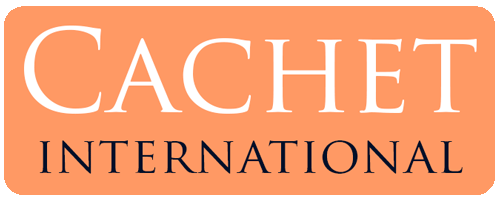To discuss a corporate intelligence or financial investigation matter, or to learn more about Cachet International’s investigative resources in your jurisdiction, contact Michele Palmer by email or at 602-899-3993.

How Bitcoins Are Used to Conceal Assets and Launder Money
Bitcoin transactions are currently quite difficult to trace, which is why Bitcoin has been associated with illicit activity.
Although most people have heard of Bitcoin software, very few understand how it works. We will explain what Bitcoin is and how it works. However, you should be aware from the outset that – despite its myth of anonymity – in most cases Bitcoin wallets (accounts) can be identified by experienced asset investigators, and transactions can be traced from origin to destination.
Note: Generally, Bitcoin with a capital “B” means the software and the system; bitcoin with a lowercase “b” means the actual money.
A BRIEF GLANCE BACK IN TIME
The first recognized “medium of exchange” (money) was Anatolian obsidian as a raw material for stone-age tools. It was distributed and used for payments as early as 12,000 B.C. As trade increased, the need for coins with intrinsic value emerged. This led eventually to the use of copper and silver as the content of early coins, beginning in the third millennium. Paper money was initially backed by gold but later came to have its value largely based on public confidence in the government issuing the currency.
THE APPEAL OF CRYPTOCURRENCY
With the increase in “digital transactions,” the indispensable role of the banks also meant that they had information on the persons/entities involved with these transactions. The banks also charged service fees and kept records of these transactions, which impacted the account holder’s anonymity. In other words, banks bring with them various costs and prevented absolute anonymity for holding or transferring currency. Increased secrecy and lowered bank fees became the goal. The concept of cryptocurrency was born.
IT ALL STARTED WITH SATOSHI
Bitcoin is the world’s biggest cryptocurrency. Bitcoin is a digital asset and a payment system invented by cryptology experts using the pseudonym “Satoshi Nakamoto.” They published their invention in 2008 and released it as open-source software in 2009. (Note: Sathoshi Nakamoto’s true identity has never been confirmed.)
THE BITCOIN PROTOCOL
At its core, Bitcoin is a cryptographic protocol, “cryptocurrency.” The protocol creates unique pieces of digital property that can be transferred from one person to another. Bitcoin is a virtual medium of exchange. It is not issued by, backed by or tied to any particular nation or government. As such, the value of bitcoins can rapidly and widely vary in value. It is the longest standing, best-known and most widely traded cryptocurrency.
In essence, all Bitcoin account holders, wallets and transactions (i.e., deposits, transfers and debits) are simply individual, randomly generated numbers that become the key or “password” for that item or activity. Each key or password is thought to be totally unique and anonymous, and the owner of that key becomes the “owner” of that account, wallet or transaction
ABSOLUTE PRIVACY – ALMOST
The Bitcoin system functions peer-to-peer; users can transact directly without an intermediary. Transactions are verified by network nodes and recorded in a publicly distributed “ledger,” called the blockchain, which uses virtual bitcoins as its unit of account. The system works without a central repository or single administrator, which has led the U.S. Treasury to categorize bitcoin as a decentralized virtual currency. Bitcoin is the first decentralized digital currency and the largest of its kind in terms of total market value.
BLOCKCHAINS: WHO NEEDS BANKS ANYHOW?
The blockchain automatically tells one party that the other party in the transaction is legitimately paying for a good or service. There are no third parties involved. The system is literally monitored by everyone. Each person who takes part in cryptocurrency commerce has the same ability to oversee the operation. The blockchain is the cornerstone of Bitcoin and is constantly updated in real time.
All confirmed transactions are included in the blockchain. This way, Bitcoin wallets (accounts) can calculate their spendable balance. New transactions can be verified to be spending bitcoins that are actually owned by the spender. The integrity and the chronological order of the blockchain are enforced with cryptography.
BITCOINS: WHAT FOR?
Bitcoins can be created as a reward for payment processing work in which users offer their computers to become part of the Bitcoin system. They verify and record payments into a public ledger or blockchain. This activity is called “mining,” and “miners” are rewarded with transaction fees and newly created bitcoins. In addition to being obtained by mining, bitcoins can be exchanged for other currencies, products and services. Users can send and receive bitcoins for an optional transaction fee.
WALLETS, SEEDS, KEYS AND MINING
A transaction is a transfer of value, between Bitcoin wallets, that gets included in the blockchain. Bitcoin wallets keep a secret piece of data called a private key, or “seed,” that is used to sign transactions. The key or seed provides a mathematical proof that they have come from the owner of the wallet. The signature also prevents the transaction from being altered by anybody once it has been issued. All transactions are broadcast between users and usually begin to be confirmed by the network in the following 10 minutes, through a process called “mining.” Basically, “mining” occurs when a computer or a network of computers runs Bitcoin software. That software creates new entries in Bitcoin’s blockchains.
BITCOIN SOFTWARE: IS IT FREE?
Because anyone can download and install the Bitcoin software for free, the payment processing and record-keeping for Bitcoin is done in a widely distributed way, rather than on one particular server. When blockchains are created, so are new bitcoins. Each bitcoin is defined by a public address and a private key, which are long strings of numbers and letters that give each a specific identity. This means that the bitcoin itself is not only a token of value but also a method for transferring that value. Buying a bitcoin can be thought of as buying a spot in the blockchain, which then records your purchase publicly and permanently.
HOW MANY BITCOINS ARE THERE IN THE WORLD TODAY?
Bitcoin estimates that the final bitcoin will be mined in the year 2140, bringing the permanent circulation to just under 21 million. (Currently, there are roughly 12.4 million bitcoins in the world.)
SECURE WALLETS: HOW DO THEY WORK?
You save bitcoins in a wallet (account). The “wallet” stores the public and private keys needed to identify the bitcoins and execute a transaction. They can be digital wallets that exist in secure cloud environments or on a computer. However, they can also take physical form. If a wallet is hacked or you lose your private Bitcoin key, you no longer have access to that Bitcoin. The possession of the public address and private key amounts to possession of the bitcoin(s). You could physically pass your Bitcoin wallet on a flash drive or electronically to another person as an anonymous form of payment.
WHERE CAN I USE BITCOINS AND WHAT FOR?
Bitcoins can either be used to buy things online from merchants and organizations that accept Bitcoin, or cashed out through an exchange, broker or direct buyer.
THE BITCOIN VEIL
People primarily buy and sell bitcoins through online exchanges. The public address and private keys are both required to trade, sell and spend bitcoins. Since transactions are done using the public keys, the identities of the buyers and sellers are veiled to each other and to the public, even though the transaction is recorded publicly.
BITCOIN EXCHANGES: MORE THAN 100
There are over 100 bitcoin exchanges in existence today. To mention just a few of these exchanges, they are available as BTC China, Bitcoin.de (Germany), VirtEx (Canada), Bitstamp (Slovenia), BTC-e (Bulgaria), CampBX (U.S.), and Bitcurex (Poland). There are also fixed-rate exchanges and brokers, such as Coinbase.
HOW IS A BITCOIN WALLET BEING SET UP?
Once an individual has settled on a broker or exchange, he/she creates an account with a user name and password and links his/her bank account. Most exchanges ask for personal information and a photographic scan of a driver’s license, passport or national ID card. Some exchanges, such as Coinbase, ask for your phone number, and some exchanges even require a recent utility bill to confirm your identity and location.
BITCOIN AND ILLICIT ACTIVITY
People often say Bitcoin is anonymous, but “pseudonymous” is more accurate. Transactions are currently quite difficult to trace, which is why Bitcoin has been associated with illicit activity, such as buying and selling drugs on the now-defunct Silk Road market.
PROS AND CONS OF USING BITCOINS
Bitcoin as a form of payment for products and services has grown, and merchants have had an incentive to accept it because fees were generally lower than the 2% to 3% typically imposed by credit card processors. Unlike credit cards, any fees are paid by the purchaser, not the vendor. It should be noted that Bitcoin users are not protected by refund rights or chargebacks.
WHO ACCEPTS PAYMENTS BY BITCOIN?
Hundreds of companies now accept bitcoins, including Amazon, CVS, eBay, Home Depot, Kmart, Sears, Subway, Target, Victoria’s Secret and Zynga. Even recent Presidential candidate Rand Paul accepted bitcoins for campaign contributions.
REGULATING BITCOIN: IS IT AT ALL POSSIBLE?
U.S. Federal Reserve Chair Janet Yellen has testified that the Fed has no potential for regulating Bitcoin. She testified that Bitcoin is “a payment innovation that’s taking place outside the banking industry,” and “to the best of my knowledge there’s no intersection at all, in any way, between Bitcoin and banks that the Federal Reserve has the ability to supervise and regulate. So the Fed doesn’t have authority to supervise or regulate Bitcoin in any way.”
HOW STABLE IS BITCOIN AS A CURRENCY?
Bitcoin continues to have issues with stability. In 2013 alone, Bitcoin went from lows of $10 to $1,200 per Bitcoin. It surpassed the value of gold at its peak before crashing down to $500. Today, it fluctuates between $380 and $682 on different exchanges. However, Bitcoin is becoming more stable and legitimate, and mainstream adoption seems possible.
Bitcoin is primarily used as a vehicle to transfer funds with anonymity. As of mid-February 2016, a bitcoin is worth US $396.61. At this same time in 2015, a bitcoin was worth over US $600. Shifts of over $90 per month are not unusual. Therefore, due to the volatility of bitcoins, the Bitcoin system is most commonly used solely as a transfer vehicle and not to “store” money.
BITCOIN AND FRAUD
Caution should be practiced when placing our trust and our money: Bitcoin exchanges are not meaningfully regulated. While this is part of Bitcoin’s appeal, it does make it easier to get defrauded.
Mt. Gox was one of the largest Bitcoin exchanges in the world. It was based in Tokyo starting in July 2010, and by 2013 it was handling 70% to 85 % of all Bitcoin transactions. In February 2014, the Mt. Gox company suspended trading, closed its website and exchange service, and filed for a form of bankruptcy protection. In April 2014, the company began liquidation proceedings. It was announced that around 850,000 Bitcoins belonging to customers and the company were missing and likely stolen. Later on, that amount was valued at more than $450 million. Subsequently, 200,000 Bitcoins were “found.”
New evidence presented in April 2015 by WizSec led them to conclude that “most or all of the missing bitcoins were stolen straight out of the Mt. Gox wallet over time, beginning in late 2011."
All Rights Reserved | Cachet International, Inc.
Registered with the Arizona Department of Public Safety under Arizona License 1536489

